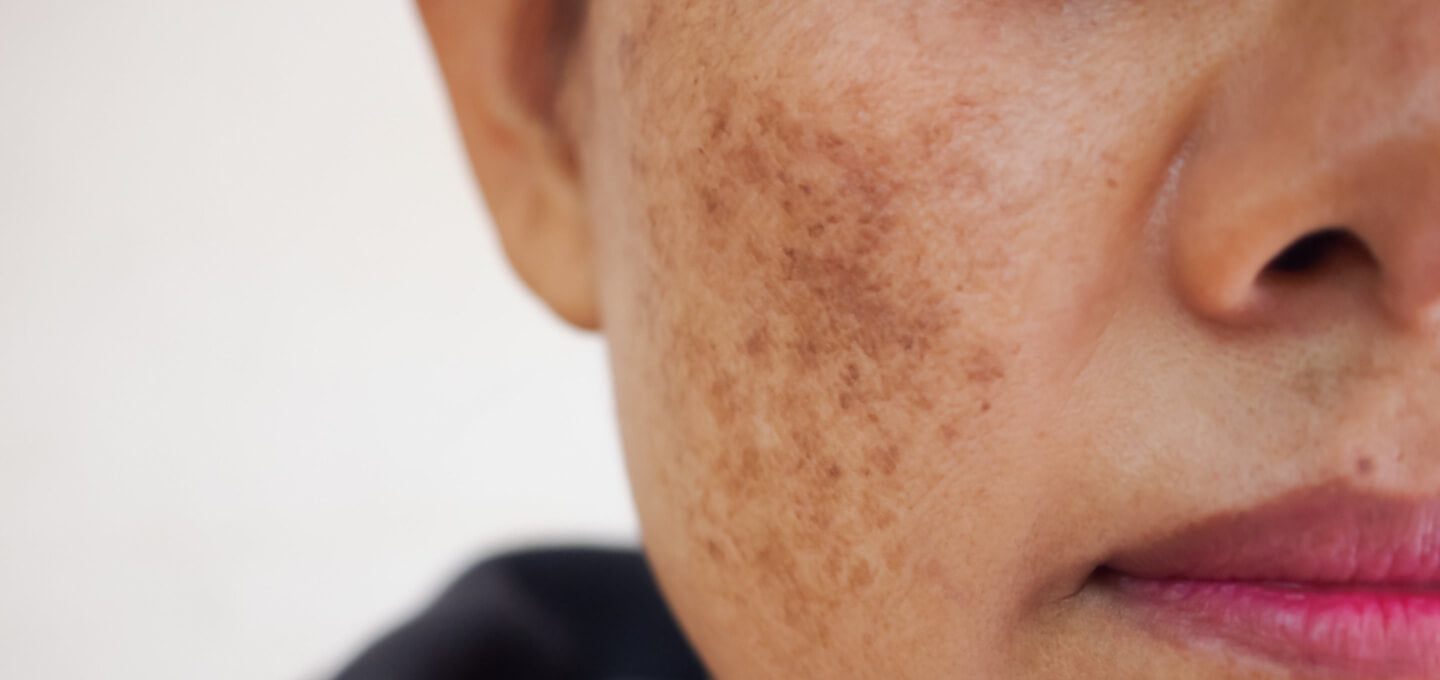Melasma, often referred to as "the mask of pregnancy," is a common skin condition characterized by patches of hyperpigmentation on the face. While it is typically harmless, melasma can significantly impact an individual's self-esteem and quality of life. Understanding the causes and triggers of melasma is essential for effective management and treatment. In this post, we delve into the common factors contributing to this skin condition.
What is Melasma?
Melasma is a skin condition that develops as brown or gray-brown patches, usually on the cheeks, forehead, nose, upper lip, and chin—areas of the face that are frequently exposed to the sun. It primarily affects women, especially those with darker skin tones, and is less common in men. Although the exact cause of melasma remains unclear, several factors are believed to contribute to development of melasma.
Hormonal Changes
Hormonal fluctuations can cause many to develop melasma. Pregnant women have increased levels of estrogen and progesterone, which can stimulate the production of melanin—the pigment responsible for skin color. This is why melasma is so common during pregnancy, and more common in women than men. Taking birth control pills, hormone replacement therapy, and hormonal fluctuations during menopause can also trigger melasma or exacerbate existing patches.
Sun Exposure
Exposure to ultraviolet (UV) radiation from the sun is a key cause of melasma. UV rays stimulate the production of melanocytes, the cells responsible for producing melanin. Individuals with melasma often notice that their patches darken after sun exposure. Therefore, wearing broad-spectrum sunscreen and protective clothing is crucial in preventing the worsening of melasma.
Genetic Predisposition
Genetics may predispose individuals to melasma, as it tends to run in families. People with a family history of melasma are more likely to develop the condition themselves. While specific genetic factors contributing to melasma are still being studied, inherited traits may influence skin pigmentation and susceptibility to environmental triggers.
Skin Irritants and Cosmetic Products
Certain skincare products and cosmetics containing harsh chemicals or fragrances can exacerbate melasma. Ingredients such as hydroquinone, alpha hydroxy acids (AHAs), and retinoids may increase skin sensitivity and trigger inflammation, leading to the worsening of melasma patches. It is essential to choose gentle, non-comedogenic products suitable for sensitive skin and to perform patch tests before incorporating new products into your skincare routine.
Thyroid Dysfunction
Thyroid disorders, particularly hypothyroidism (underactive thyroid) and hyperthyroidism (overactive thyroid), have been associated with melasma. Imbalances in thyroid hormone levels can disrupt the body's melanin production process, potentially leading to the development or exacerbation of melasma. Proper management of thyroid conditions may help alleviate melasma symptoms in some cases.
Hormonal Treatments and Medications
Certain medications and treatments, including corticosteroids and photosensitizing drugs, can induce melasma or make existing patches more prominent. These medications may alter hormone levels, increase skin sensitivity to sunlight, or interfere with melanin production pathways. Patients should consult their healthcare providers about potential side effects and alternative treatment options if melasma develops or worsens during medication use.
Treatment of Melasma
While prescription medications and professional treatments, like chemical peels, are available to treat melasma, several retail-available, topical melasma treatments options can help manage the condition:
-
Sunscreen: Broad-spectrum sunscreens with SPF 30 or higher protect against UV radiation and prevent melasma from worsening. Look for products containing zinc oxide or titanium dioxide for physical sun protection.
-
Topical Lightening Agents:
- Hydroquinone: Available in OTC formulations (2% or less), hydroquinone inhibits melanin production and lightens dark spots. It's typically applied twice daily for several weeks.
- Kojic Acid: Derived from fungi, kojic acid inhibits tyrosinase, an enzyme involved in melanin synthesis. It's often found in OTC creams and serums.
- Vitamin C: Ascorbic acid (vitamin C) possesses antioxidant properties and inhibits melanin production. Look for serums containing vitamin C for brightening effects.
-
Alpha Hydroxy Acids (AHAs): Glycolic acid and lactic acid exfoliate the skin, promoting cell turnover and reducing the appearance of dark spots. OTC products containing AHAs can improve melasma over time.
-
Azelaic Acid: Azelaic acid is a tyrosinase inhibitor - it inhibits melanin production when skin is overstimulated or irritated due to stimulants like sun exposure.
-
Niacinamide: Also known as vitamin B3, niacinamide inhibits melanosome transfer from melanocytes to keratinocytes, reducing pigmentation. OTC creams and serums containing niacinamide can improve melasma and overall skin tone.
Conclusion
Melasma is a complex skin condition influenced by various factors, including hormonal changes, sun exposure, genetics, skincare products, thyroid dysfunction, and medications. While melasma is not harmful, it can significantly impact an individual's self-confidence and quality of life. Understanding the common causes and triggers of melasma is essential for effective management and prevention.
If you suspect that you have melasma or are experiencing changes in your skin pigmentation, consult a dermatologist for a proper diagnosis and personalized treatment plan. Combining sun protection, gentle skincare, and targeted treatments for melasma can help manage it and minimize its impact on your skin's appearance and health.
References:
- Kim EH, Kim YC, Lee ES, Kang HY. The vascular characteristics of melasma. J Dermatol Sci. 2007;46(2):111-116.
- Rodrigues M, Pandya AG. Melasma: clinical diagnosis and management options. Australas J Dermatol. 2015;56(3):151-163.
- Sarkar R, Arora P, Garg VK, Sonthalia S, Gokhale N. Melasma update. Indian Dermatol Online J. 2014;5(4):426-435.
- Ortonne JP, Arellano I, Berneburg M, et al. A global survey of the role of ultraviolet radiation and hormonal influences in the development of melasma. J Eur Acad Dermatol Venereol. 2009;23(11):1254-1262.
- Grimes PE. Melasma. Etiologic and therapeutic considerations. Arch Dermatol. 1995;131(12):1453-1457.





